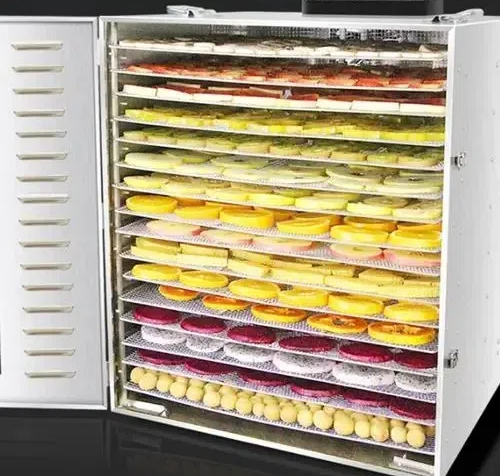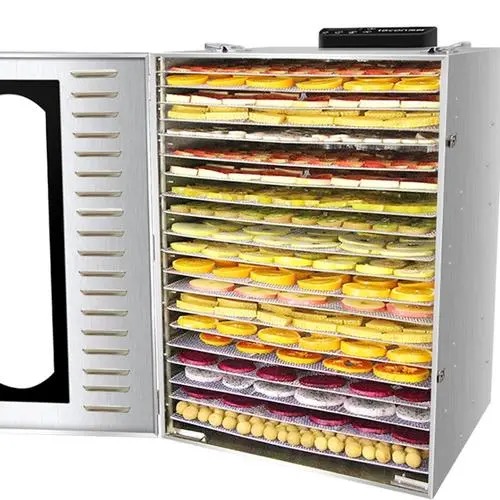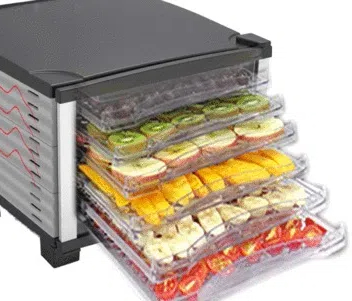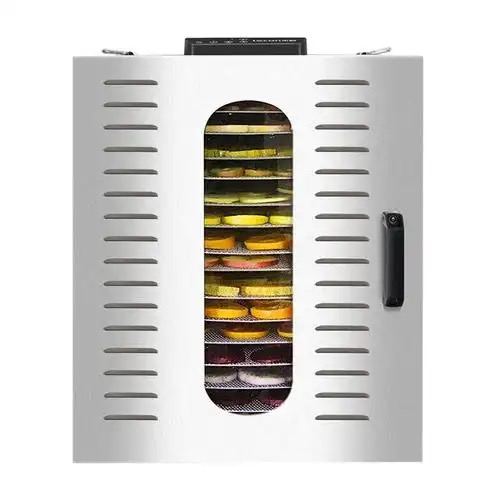
Content Menu
● Introduction
● What is Food Drying?
● Benefits of Food Drying
● Types of Food Dryers
>> Sun Drying
>> Air Drying
>> Dehydrators
>> Oven Drying
● Choosing the Right Food Dryer
● How to Use a Food Dryer
● Common Foods to Dehydrate
>> Fruits
>> Vegetables
>> Herbs
>> Meats
● Storage and Usage of Dried Foods
● Conclusion
● FAQs
>> 1. What foods are best for drying?
>> 2. How long does it take to dry food?
>> 3. Can you dry food without a dehydrator?
>> 4. What is the best temperature for drying food?
>> 5. How do you know when food is fully dried?
Introduction
Food drying is an ancient preservation method that has stood the test of time. It not only extends the shelf life of food but also enhances flavors and retains nutritional value. In this article, we will explore the various methods of food drying, the benefits it offers, and how to choose the right food dryer for your needs.
What is Food Drying?
Food drying is the process of removing moisture from food to inhibit the growth of bacteria, yeasts, and molds. This method has been used for centuries, dating back to ancient civilizations that relied on the sun to dehydrate fruits and meats. Today, modern technology has introduced various food drying appliances that make the process more efficient and accessible.

Benefits of Food Drying
The benefits of food drying are numerous. Firstly, it preserves the nutritional content of food, allowing you to enjoy healthy snacks without additives. Secondly, it is a cost-effective way to store seasonal produce, reducing waste and saving money. Lastly, dried foods are lightweight and easy to store, making them perfect for camping, hiking, or emergency preparedness.
Types of Food Dryers
There are several methods for drying food, each with its advantages and disadvantages:
Sun Drying
This traditional method involves placing food in direct sunlight. While it is energy-efficient, it is weather-dependent and may not be suitable for all climates.
Air Drying
Similar to sun drying, air drying uses natural airflow to remove moisture. This method is often used for herbs and certain fruits.
Dehydrators
Electric dehydrators are popular for their efficiency and control over temperature and airflow. They come in various sizes and capacities, making them suitable for both home and commercial use.
Oven Drying
Using an oven to dry food is a convenient option, especially for small batches. However, it can be less energy-efficient compared to dedicated dehydrators.
Choosing the Right Food Dryer
When selecting a food dryer, consider factors such as capacity, features, and energy efficiency. Look for models with adjustable temperature settings and timers for optimal results. Popular brands include Excalibur, Nesco, and Cosori, each offering a range of models to suit different needs.

How to Use a Food Dryer
Using a food dehydrator is straightforward. Here’s a step-by-step guide:
Preparation: Wash and slice your food into uniform pieces to ensure even drying.
Pre-treatment: Some fruits, like apples and peaches, benefit from pre-treatment with lemon juice or ascorbic acid to prevent browning.
Loading: Arrange the food on the dehydrator trays, leaving space for air circulation.
Setting the Temperature: Set the dehydrator to the recommended temperature for the type of food you are drying.
Timing: Monitor the drying process and check for doneness periodically. Most foods take several hours to dry completely.
Common Foods to Dehydrate
Many foods can be successfully dried, including:
Fruits
Apples, bananas, and strawberries are popular choices. They can be enjoyed as snacks or used in baking.
Vegetables
Carrots, bell peppers, and tomatoes can be dried for soups and stews.
Herbs
Basil, oregano, and thyme retain their flavor when dried, making them perfect for seasoning.
Meats
Jerky is a favorite among outdoor enthusiasts and can be made from various meats.
Storage and Usage of Dried Foods
Proper storage is crucial for maintaining the quality of dried foods. Store them in airtight containers in a cool, dark place. Dried foods can be rehydrated by soaking in water or added directly to soups and stews.
Conclusion
Food drying is a valuable skill that not only helps preserve food but also enhances its flavor and nutritional value. With the right equipment and techniques, anyone can enjoy the benefits of dried foods. Whether you are looking to save money, reduce waste, or simply enjoy delicious snacks, food drying is an excellent option.

FAQs
1. What foods are best for drying?
Fruits, vegetables, herbs, and lean meats are ideal for drying.
2. How long does it take to dry food?
Drying times vary depending on the type of food and the method used, ranging from a few hours to over a day.
3. Can you dry food without a dehydrator?
Yes, you can use an oven or air dry food, although a dehydrator is more efficient.
4. What is the best temperature for drying food?
Most foods dry best at temperatures between 125°F and 160°F.
5. How do you know when food is fully dried?
Dried food should be leathery and pliable, with no moisture pockets.












